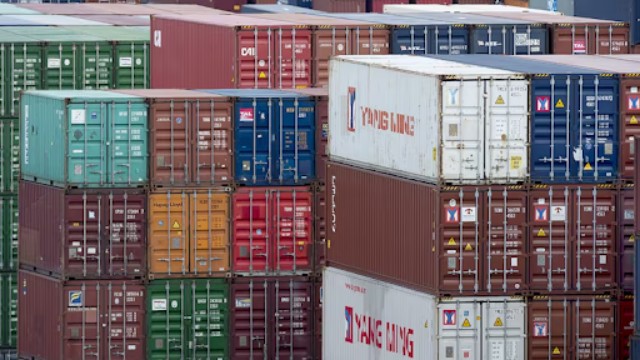
A shopper enters a Loblaw grocery store in Toronto. PHOTO BY COLE BURSTON /Bloomberg
As a month-long boycott of Loblaw Cos. Ltd. enters its third week, the company’s investors remain largely unaffected. Despite growing support for the movement, its impact is mostly anecdotal. Loblaw’s stock reached an all-time high of $156.76 a week after the boycott began and has stayed positive for the month. Here’s an overview of the situation.
Who is behind the boycott, and how many supporters does it have?
The boycott was initiated by a Reddit group called “r/loblawsisoutofcontrol” (LobIaws is out of control), which has grown to about 77,000 members from 56,000 since May 1, when the boycott began. The group was started by Emily Johnson in November, and she was joined by eight other organizers from across Canada. They urged consumers to avoid Loblaw subsidiaries (Loblaws, No Frills, Real Canadian Superstore, and Shoppers Drug Mart/Pharmaprix) throughout May. The Reddit page has amassed 4.5 million views, and the group’s Instagram account has over 10,600 followers.
Phoenix (Vince) Geisler, an organizer working with Johnson, noted that the boycott gained traction in its second week. Data from Google Maps indicated strong participation in Eastern Canada, including Ontario, Nova Scotia, and Newfoundland, as well as in Alberta. However, these figures have not been verified, and Loblaw did not comment on the boycott’s impact.
What are they hoping to achieve with the boycott?
The boycott is driven by dissatisfaction with the high cost of living in Canada. Participants are redirecting their grocery spending to stores not owned by Loblaw, although this is challenging in areas where Loblaw has a significant market share—27% nationally—and is often the only local option. Johnson hopes the boycott will financially impact Loblaw, raise awareness, educate consumers, and attract government attention.
One of the boycott’s main goals is for Loblaw to sign the grocer code of conduct, which the company opposes, arguing it would harm business and increase food prices. Protesters also demand no further retailer-led price hikes for 2024, no additional dividend increases, greater transparency about “shrinkflation,” price caps on essential items, and an end to price gouging.
What happened at the meeting between boycott organizers and Loblaw’s CEO?
Emily Johnson met with Loblaw’s CEO, Per Bank, on May 2. According to a transcript obtained by the Financial Post, Johnson voiced consumer concerns, and Bank discussed measures Loblaw is taking to help customers, such as eliminating “multi-buy” promotions. However, organizers felt the meeting yielded no concrete commitments. Despite positive dialogue, the boycott will continue, according to Geisler.
How has Loblaw responded?
During Loblaw’s annual general meeting on May 2, executive chairman and former CEO Galen Weston Jr. and Per Bank addressed what they called “misguided criticism.” Weston acknowledged that as Canada’s largest grocer, Loblaw is a focal point for consumer frustrations.
What is the bottom line for Loblaw?
On the day the boycott started, Loblaw reported a 15% dividend increase and a nearly 10% rise in profits for the first quarter. The company attributed its revenue and profit increases to higher customer traffic, with prices rising less than the overall food inflation rate. Loblaw’s revenue for the quarter ending March 23 was $13.58 billion, up by $586 million from the same period in 2023, with net earnings rising 9.8% to $459 million and earnings per diluted common share up 14% to $1.47.















